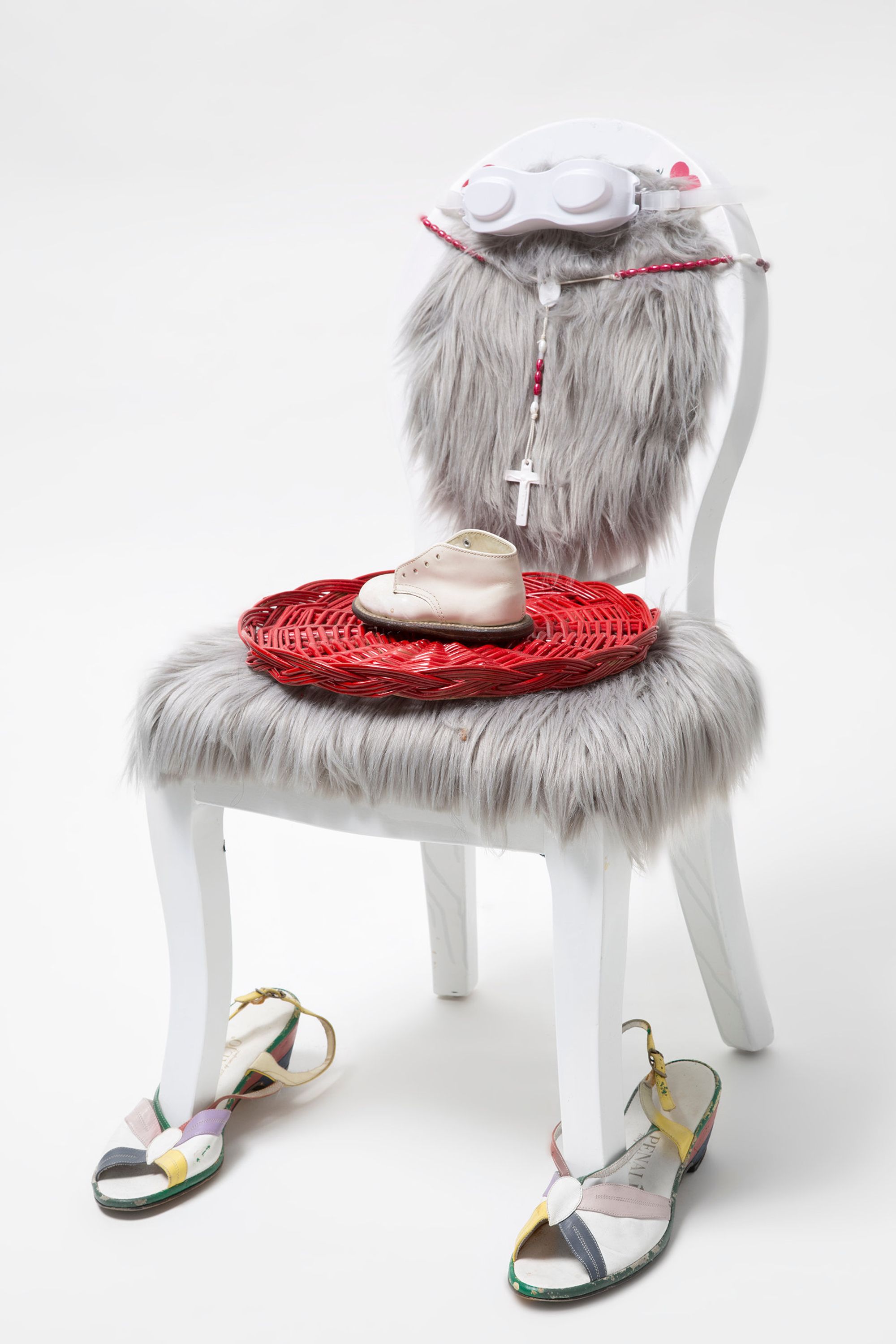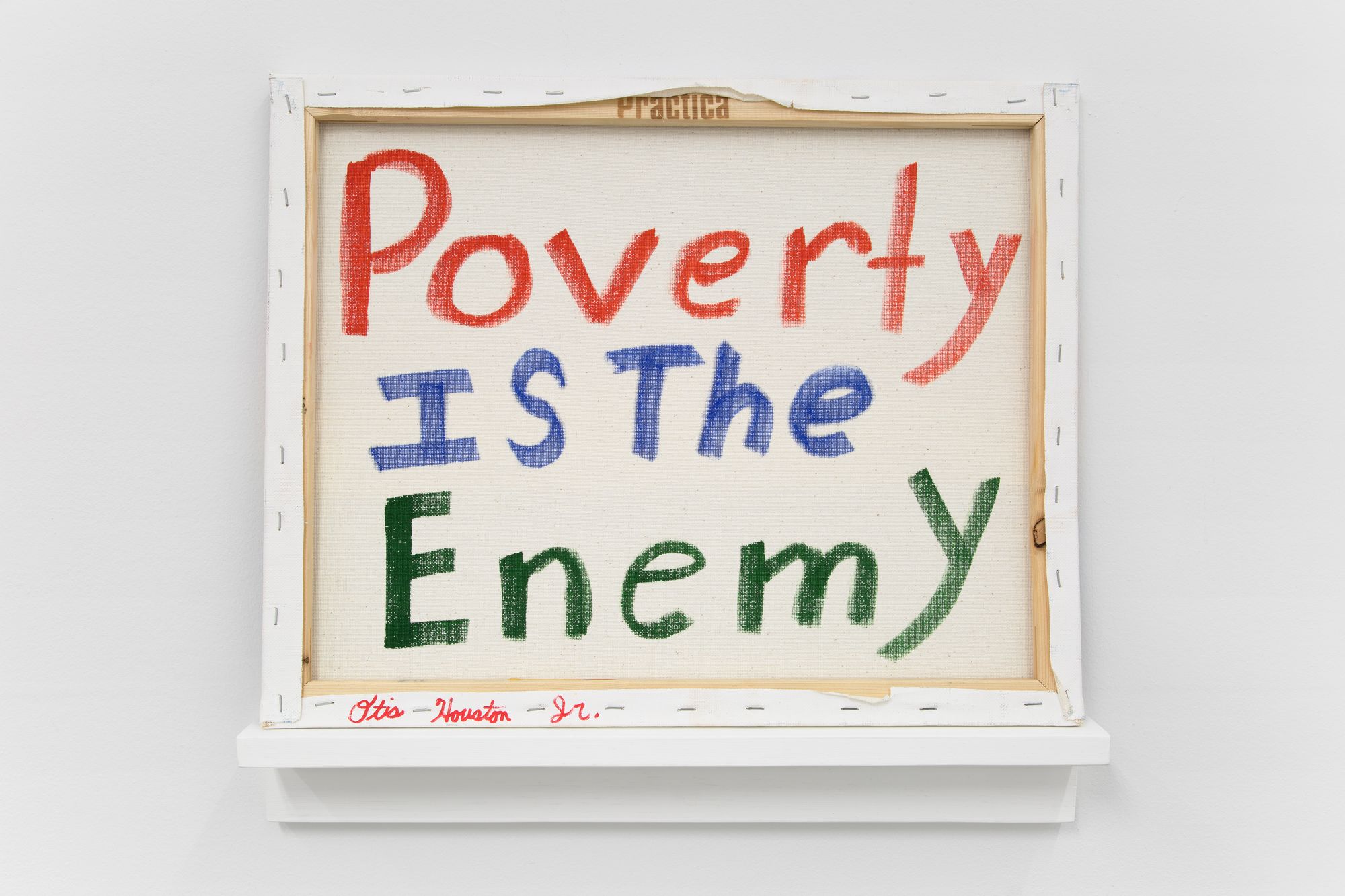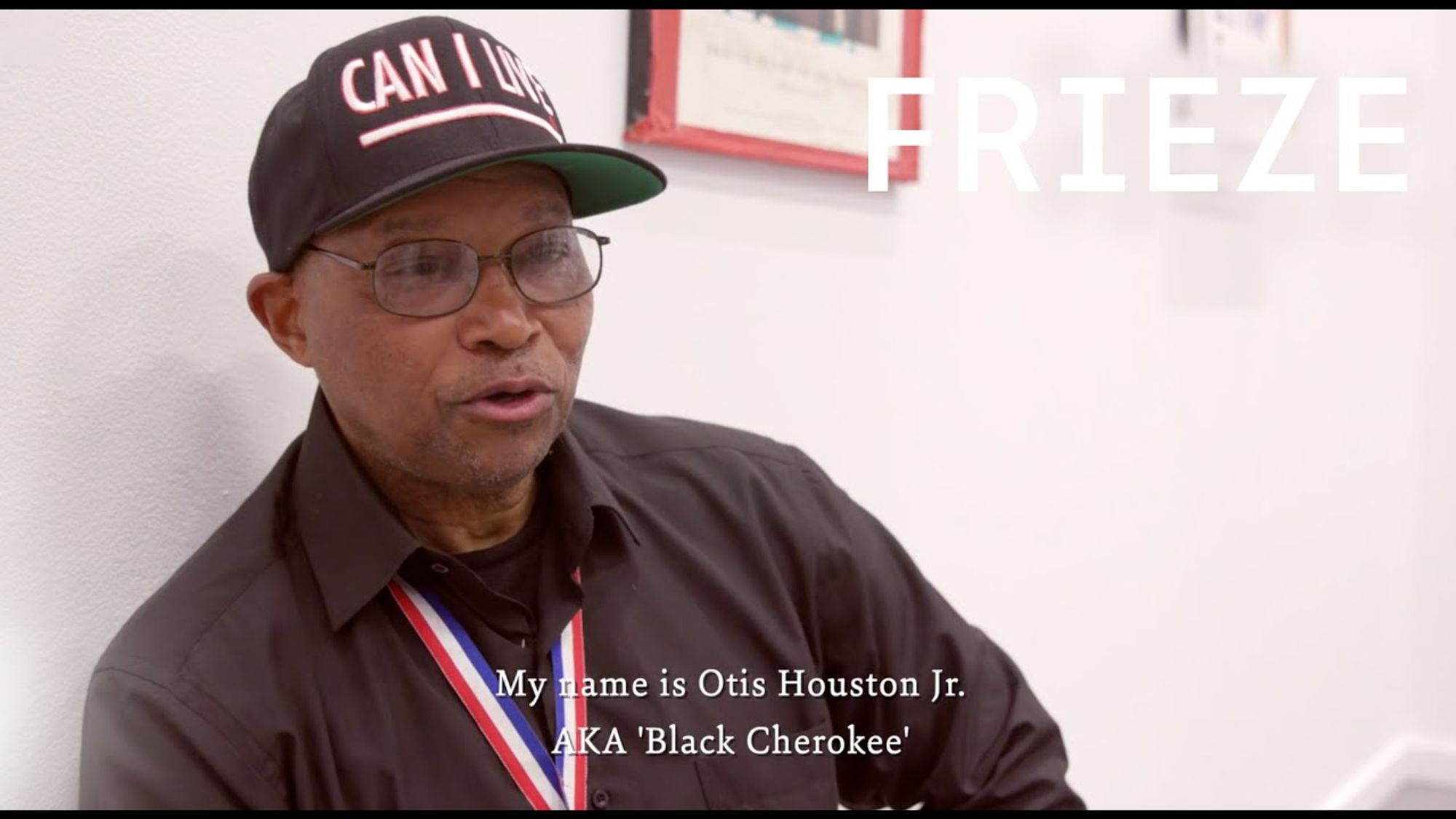Otis Houston Jr.
Frieze New York: Otis Houston Jr.
May 5–May 9, 2021
The works of Otis Houston Jr., aka “Black Cherokee,” are primarily made with discarded objects he collects from the street and the dumpster at his job. Created in his Harlem apartment in the Taino Towers housing project, where he’s lived for the past thirty years, and in the basement of the office building where he works in Midtown Manhattan, these artworks are informed by his perennial practice: an ongoing site-specific installation where he performs on the side of the FDR Drive. Over the years, he has come to occupy and claim this marginalized stretch of highway as gallery, studio, and forum. Since 1997, following a period of incarceration and his mother’s death, Houston Jr. has returned weekly to his self-anointed soapbox under the Triborough Bridge, where he stages impromptu performances and displays an arrangement of signage, drawings, and found-object assemblages that critique racism, poverty, and addiction, and celebrate health, education, happiness, and freedom. As he says, “We not in the same boat, but we all in the water.”
Like Houston Jr.’s persistent return to his spot on the highway, his declarative banners and anthropogenic sculptures insist on presence and liberation, actively working against erasure, inertia, and silence as well as frequent harassment by the police: “Where performance art goes from here is only a matter of imagination. In other words, there are no foreseeable boundaries for performance art.” The drawn text on his placards, banners, and found paintings are playful and pointed epigrams, concrete poetry, and activist calls distilling social issues into word-forms and text-shapes that ever-shift with meaning, visual power, art, and politics. His works made with found objects stand in for the body, referring back to his use of his own physicality in the highway performances. They also emphasize Houston Jr.’s democratic approach to artmaking: his use of direct address, discarded objects, fruits and vegetables from his fridge, paperbacks from his personal library, flowers from the corner store, all of it an insistence that the artist “use what he’s got.” Quoting Malcolm X when speaking about how and why he makes art, he explains: “All of our experiences fuse into our personality. Everything that ever happened to us is an ingredient."
—Svetlana Kitto






Peace, 2018, Marker on found object, 80 x 27¾ x 1¼ inches

Police told a lie, 2018, Found painting and object, coconuts, Dimensions variable

Mother Sadie, 2018, Found and altered objects, 27 × 15 × 17.5 inches

A Happy Death, 2018, Spray paint, screws, paper, found and altered objects, 41.25 × 17.5 × 15.25 inches

Basquiat I, 2020, Spray paint and marker on found object, 36 × 24 inches

Basquiat II, 2020, Marker on found object, 36 × 24 inches

Basquiat III, 2020, Marker and paint marker on found object, 36 × 24 inches

The Chief, 2010, Marker and tape on found framed print, 28 × 20 inches

The Enemy, 2018, Marker on found painting, 15 × 20 inches

Workers Come Together, 2018, Marker on canvas, 24 × 36 inches

Untitled (If 'You Cant Be The Cows Head...), 2021, Spray paint on towel, 23.5 × 50.25 inches

Untitled (WE CAN DO IT), 2020, Spray paint on towel, 23 × 44.25 inches

Untitled (Black Disabled Versus...), 2021, Spray paint on towel, 23.5 × 44.5 inches

Untitled (Together We Stand Divided...), 2021, Spray paint on towel, 22 × 45 inches
